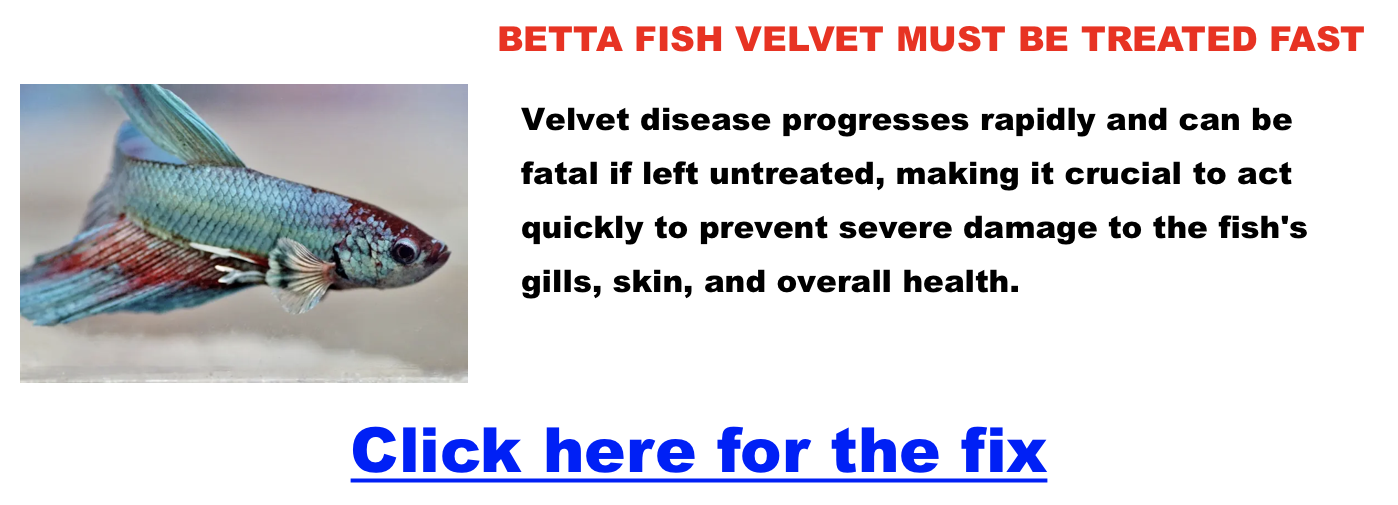How To Treat Betta Fish Suffering From Velvet
Betta fish, with their dazzling beauty, are remarkably resilient creatures. However, like any living being, they can fall ill. One potential illness to be aware of is velvet, a parasite that can pose a significant threat to your betta. But fear not! With the right plan, you can effectively treat velvet and help your betta regain their vibrant health.
What is Velvet?
Velvet isn’t a fabric mishap on your betta. It’s a nasty parasite clinging to your fish’s skin and fins. Here’s how to spot it:
- Golden Dust: Look closely. Does your betta’s color seem off? Velvet can make them look like they’re covered in fine, gold or rust-colored dust.
- Scratching: Parasites are itchy! Your betta might rub against things in the tank like they’re trying to scratch an itch they can’t reach.
- Strange Swimming: Velvet can make your betta uncomfortable, causing them to swim erratically or clamp their fins close to their body.
- Loss of Appetite: When a fish doesn’t feel well, they often don’t want to eat.
Treating Velvet
Click here if you want to learn how to cure velvet
Velvet is a serious condition, so it’s crucial to start treatment immediately upon spotting the signs. By doing so, you’re taking a proactive and responsible approach to your betta’s health. Here’s what you need to do:
- Isolate: Velvet is highly contagious. If you have other fish in the tank, immediately move your betta to a separate “hospital tank” for treatment.
- Dim the Lights: These parasites don’t like bright light. Dimming your betta’s tank or covering it with a towel can help disrupt their life cycle.
- Raise the Temperature (Carefully): Raising your tank water temperature to around 82°F speeds up the life cycle of the parasites, making treatment more effective. Caution: Do this slowly over a day or two; sudden temperature changes stress bettas.
Treat with Medications: Several medications can combat velvet. Here are some commonly used options:
- Malachite Green: This is a traditional anti-parasite treatment. Follow the dosage directions carefully.
- Copper Sulfate is another effective option, but be very precise with the dosage as it can be toxic to fish.
- Aquarium Salt: Not a cure-all, but it can assist medication in fighting the parasites.

credit: Betta fish forum
Important Notes:
- Always follow medication instructions to the letter. Overdosing can harm your fish.
- Remove carbon filters during treatment. Carbon filtration can take the medication out of the water.
- Don’t stop treatment too early! Even if your fish looks better, continue the medication as directed to ensure the parasites are completely gone.
Prevention for Velvet-Free Betta Bliss
While treating velvet is possible, it’s stressful for you and your fish. A healthy, parasite-free tank is everyone’s goal! Here are the most effective ways to keep velvet out of your betta’s beautiful home:
- Quarantine is Queen: This is the golden rule. A separate quarantine tank is absolutely essential. Keep new fish, plants, or decorations in this tank for at least two weeks. Before introducing these items to the main tank, observe the bettas closely for any signs of illness.
- The Salt Assist: Aquarium salt isn’t a magic velvet solution but a gentle defense booster. Add a small amount (follow product directions) to your betta’s tank during routine water changes. Salt helps your fish produce a healthy slime coat, making it harder for parasites to attach, and boosts their overall health.
- Stress-Free Zone: Stress weakens a fish’s immune system. Ensure your betta’s tank is the right size, has proper filtration, and offers plenty of hiding places. Avoid overcrowding, aggressive tankmates, and sudden changes to water temperature or light exposure.
- Food for Thought: A high-quality, balanced diet keeps your betta strong. Avoid overfeeding, which can degrade water quality and invite trouble.
- Pre-Loved Items? Proceed with Caution: Used tanks, equipment, or decorations might harbor unseen parasites. If possible, purchase new items. If you must use pre-loved supplies, thoroughly disinfect them with a bleach solution (carefully rinsed away afterward) or quarantine them separately for several weeks.
- Responsible Sourcing: Purchase fish from reputable stores or breeders with a good track record. Healthy fish are less likely to carry parasites. Visually inspect fish before bringing them home, and always quarantine new arrivals.
A Note on Plants: Live plants bring benefits but can also be a source of hidden parasites. Consider these options:
- Quarantine: Keep new plants in a separate tank for a few weeks.
- Tissue Culture Plants: These plants, grown in a sterile laboratory environment, are less likely to carry parasites.
- Plant Dips: Specialized dips are available to help disinfect plants before placing them in a tank. Research proper usage and be cautious; some solutions can harm certain plant types.
It’s Worth the Effort
While preventing velvet may require a little extra effort, it’s the kindest way to ensure your betta thrives. By following these guidelines, you’re creating an environment where your betta can shimmer and shine worry-free. This assurance should instill a sense of confidence and security in your betta’s health.



